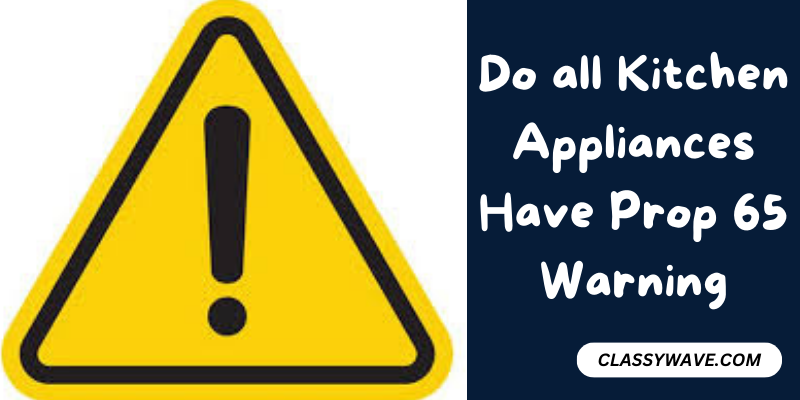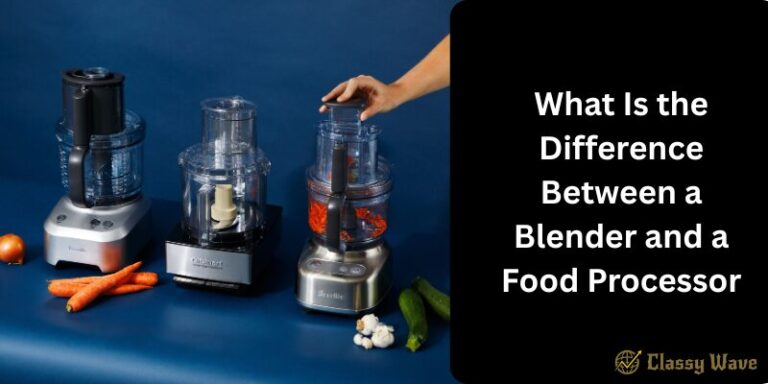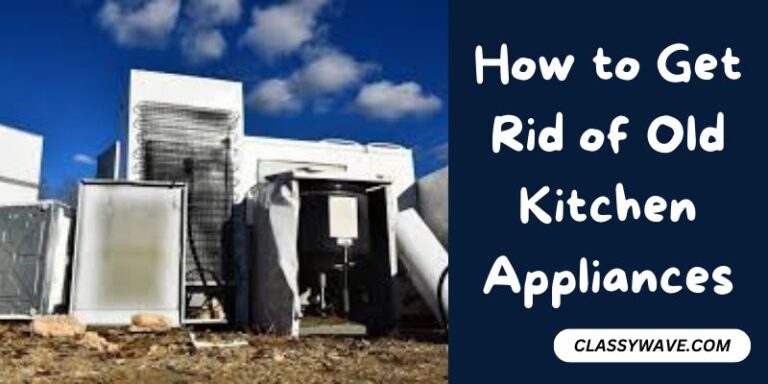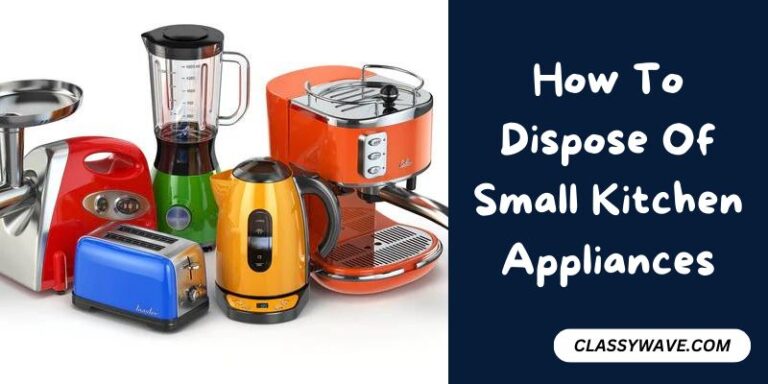Do All Kitchen Appliances Have Prop 65 Warning – Exploring Safety Labels
In recent years, Proposition 65 warnings have become a familiar sight, causing consumers to pause and consider the safety of the products they use daily. But what about kitchen appliances? Are they also subject to Proposition 65 warnings, and if so, why?
In this article, we’ll delve into the world of kitchen appliances, exploring the presence of Proposition 65 warnings, the reasons behind them, and how consumers can navigate this complex landscape. Proposition 65, formally known as the Safe Drinking Water and Toxic Enforcement Act of 1986, is a California law designed to protect consumers from exposure to harmful chemicals.
While initially focused on water safety, Proposition 65 has extended its reach to various products, raising questions about the safety of everyday items, including kitchen appliances.
Understanding Proposition 65
Overview of Proposition 65
Proposition 65 requires businesses to provide warnings to consumers about significant exposures to chemicals that cause cancer, birth defects, or other reproductive harm. This law aims to empower consumers to make informed decisions about the products they purchase and use.
Products Covered by Proposition 65
While Proposition 65 covers a wide range of products, not all are required to display warnings. The law specifically targets products containing chemicals identified by the State of California as causing harm. This leads us to the question: Do all kitchen appliances fall under this category?
The Purpose of Proposition 65 Warnings
The primary goal of Proposition 65 warnings is to inform consumers about potential risks associated with product use. By providing clear and visible warnings, manufacturers and retailers fulfill their legal obligation to keep consumers informed.
Kitchen Appliances and Proposition 65
Common Kitchen Appliances
From refrigerators to blenders, kitchen appliances play a crucial role in our daily lives. However, the presence of Proposition 65 warnings on these items depends on various factors, including the materials used in their construction.
Prop 65 Warning Requirements for Kitchen Appliances
Not all kitchen appliances are required to carry a Proposition 65 warning. The determination often revolves around whether the appliance contains chemicals listed by the State of California as harmful. Manufacturers must rigorously test their products to ensure compliance with these regulations.
Reasons for Proposition 65 Warnings
Presence of Harmful Chemicals
The inclusion of Proposition 65 warnings on certain kitchen appliances is prompted by the presence of chemicals known to the State of California to cause harm. These chemicals may be found in components such as wiring, coatings, or insulation.
Health Risks Associated with These Chemicals
Understanding the health risks associated with specific chemicals is essential for consumers. Proposition 65 warnings on kitchen appliances serve as a precautionary measure, alerting individuals to potential risks and allowing them to make informed choices.
Compliance in the Kitchen Appliance Industry
How Manufacturers Ensure Compliance
Manufacturers in the kitchen appliance industry must adhere to strict testing procedures to ensure their products meet Proposition 65 standards. This involves thorough testing of materials and components to identify and eliminate any potentially harmful substances.
Testing Procedures and Standards
The testing procedures for Proposition 65 compliance are standardized and well-defined. Manufacturers must follow these procedures to guarantee the safety of their products and avoid potential legal consequences.
Consumer Awareness
Understanding Proposition 65 Warnings as Consumers
As consumers, it’s crucial to understand the significance of Proposition 65 warnings. These warnings are not an indication that a product is inherently unsafe but rather a signal that certain precautions should be taken during use.
Making Informed Choices While Purchasing Kitchen Appliances
When shopping for kitchen appliances, consumers should be aware of Proposition 65 and inquire about the presence or absence of warnings. This knowledge empowers individuals to choose products that align with their safety preferences.
Controversies Surrounding Proposition 65
Critics’ Perspectives
While Proposition 65 aims to protect consumers, it has not been without controversy. Critics argue that the law has led to an abundance of warnings, potentially causing confusion and desensitizing the public to significant risks.
Response from the Industry
In response to concerns, the kitchen appliance industry has implemented measures to streamline the application of Proposition 65 warnings. This includes providing clearer information to consumers and addressing any misconceptions.
Navigating Proposition 65 Labels
Deciphering Warning Labels
Understanding the information provided on Proposition 65 warning labels is crucial. Manufacturers are required to provide specific details about the chemicals involved and the potential risks, enabling consumers to make educated decisions.
What Consumers Should Look For
Consumers should pay attention to the details on warning labels, considering the specific chemicals mentioned and the recommended precautions. This information assists in making informed choices regarding
product use.
Burstiness in the Kitchen Appliance Market
Introduction to Burstiness
Burstiness refers to the sudden and unpredictable appearance of warnings or trends in the market. In the kitchen appliance industry, burstiness can impact consumer perceptions and purchasing decisions.
Impact on the Kitchen Appliance Industry
The burstiness phenomenon can create challenges for manufacturers, requiring them to adapt swiftly to changing consumer preferences and regulatory requirements. This dynamic nature adds an extra layer of complexity to an already competitive market.
Perplexity and Kitchen Appliance Purchases
Factors Contributing to Perplexity
Perplexity in the context of kitchen appliances involves the complexity and uncertainty surrounding Proposition 65 warnings. Consumers may find it challenging to navigate conflicting information and make sense of the potential risks associated with different products.
How Burstiness and Perplexity Influence Buying Decisions
The interplay between burstiness and perplexity influences consumer decisions. Manufacturers must address these challenges by providing clear, concise information and ensuring that products meet the necessary safety standards.
The Balancing Act for Manufacturers
Meeting Safety Standards
Manufacturers face the challenge of meeting stringent safety standards while maintaining the functionality and appeal of their kitchen appliances. Striking the right balance is crucial to ensure consumer safety without compromising product quality.
Ensuring Market Competitiveness
In a competitive market, manufacturers must not only meet safety standards but also stay competitive in terms of design, features, and pricing. This balancing act requires a comprehensive approach to product development.
The Human Touch in Kitchen Appliance Content
Importance of Human-Centric Content
Amidst the regulations and technicalities, the human element is crucial. Creating content that resonates with consumers on a personal level helps build trust and reinforces the commitment to safety.
Connecting with Consumers on a Personal Level
Manufacturers and retailers can connect with consumers by providing transparent information, sharing stories, and emphasizing the human impact of their products. This approach goes beyond compliance and fosters a sense of trust.
Tips for Safe Kitchen Appliance Use
Proper Handling and Maintenance
Ensuring the safe use of kitchen appliances involves proper handling and maintenance. Consumers should follow manufacturer guidelines for installation, usage, and maintenance to minimize potential risks.
Additional Precautions for Families with Children
Families with children should take additional precautions, such as securing appliances to prevent tipping and keeping small parts out of reach. Manufacturers can contribute by providing clear safety instructions tailored to families.
Conclusion
In conclusion, the presence of Proposition 65 warnings on kitchen appliances is not universal, but it is a reality for some products. Understanding the reasons behind these warnings, navigating labels, and making informed choices empowers consumers to prioritize safety without compromising convenience.
FAQs
What does a Prop 65 warning mean for kitchen appliances?
A Prop 65 warning on a kitchen appliance indicates the presence of chemicals known to the State of California to cause harm.
Are all kitchen appliances required to have Prop 65 warnings?
Not all kitchen appliances are required to have Prop 65 warnings. The necessity depends on whether the appliance contains chemicals listed by the State of California as harmful.
How can consumers stay informed about Proposition 65?
Consumers can stay informed by checking product labels, researching specific chemicals, and seeking information from manufacturers and reputable sources.
Are there alternatives to kitchen appliances with Prop 65 warnings?
Yes, consumers can explore alternatives that meet their safety preferences. Manufacturers may offer Prop 65-compliant and non-compliant options.
What should I do if I already own a kitchen appliance with a Prop 65 warning?
Follow the manufacturer’s guidelines for safe use and maintenance. If you have specific health concerns, consult with a healthcare professional.







